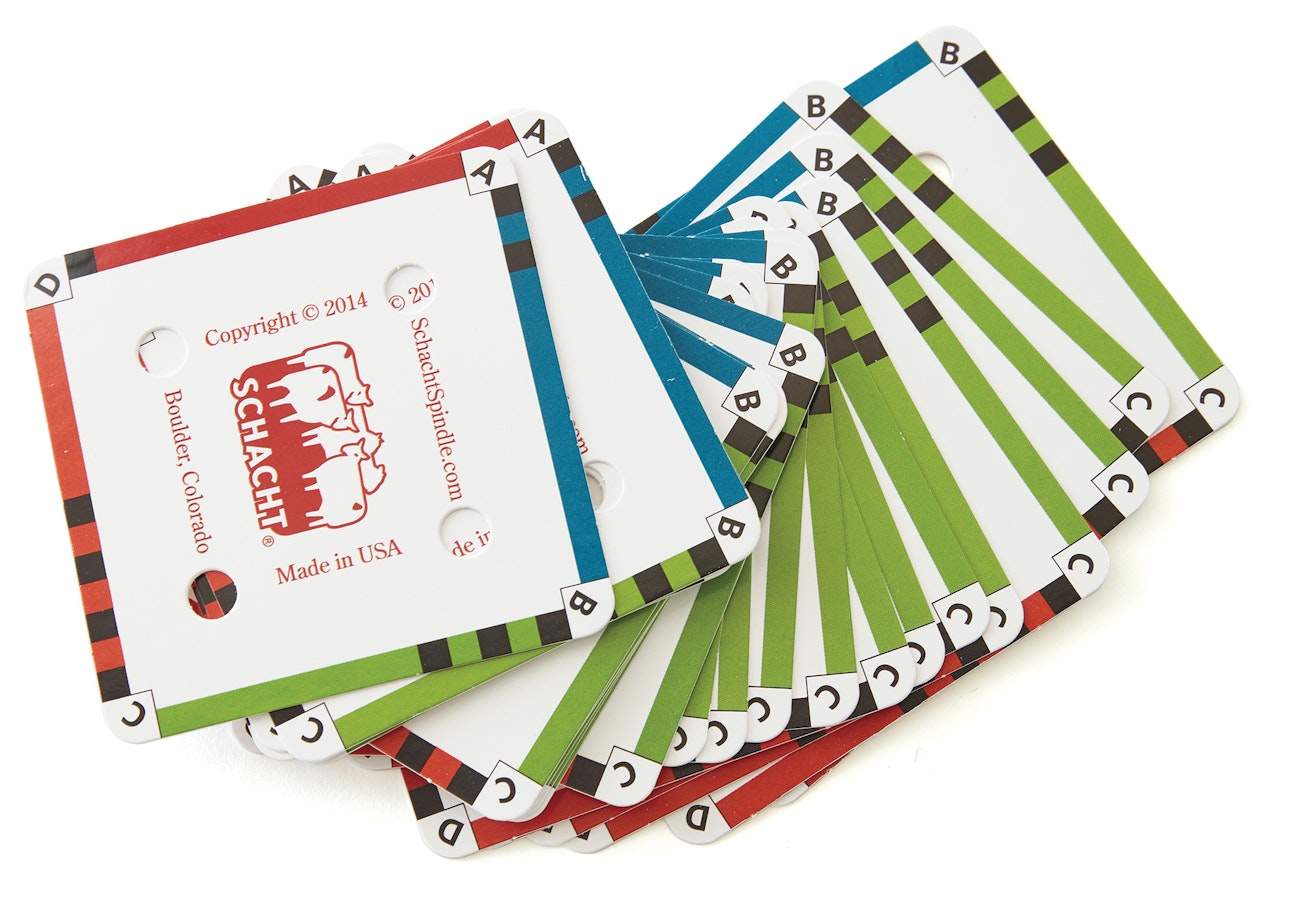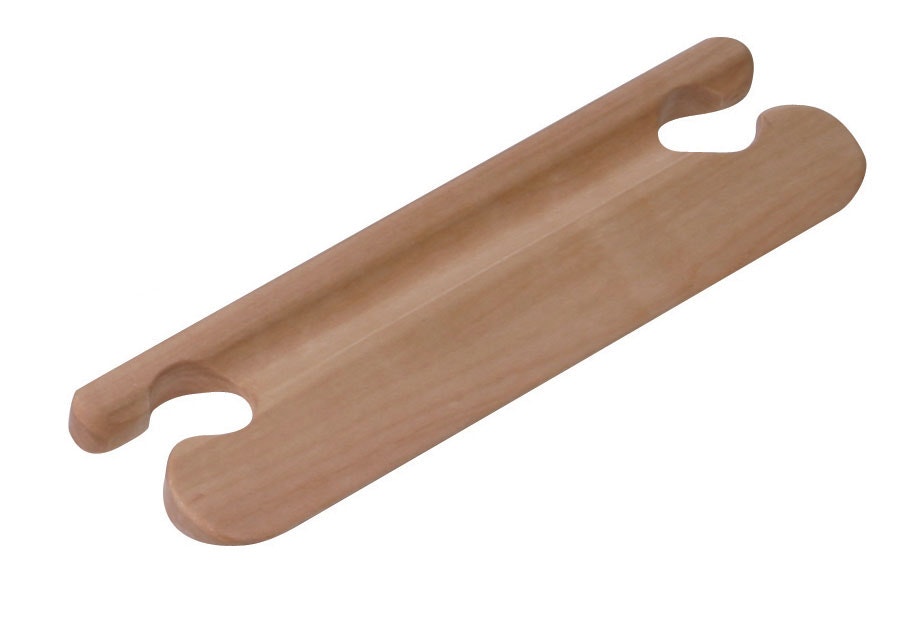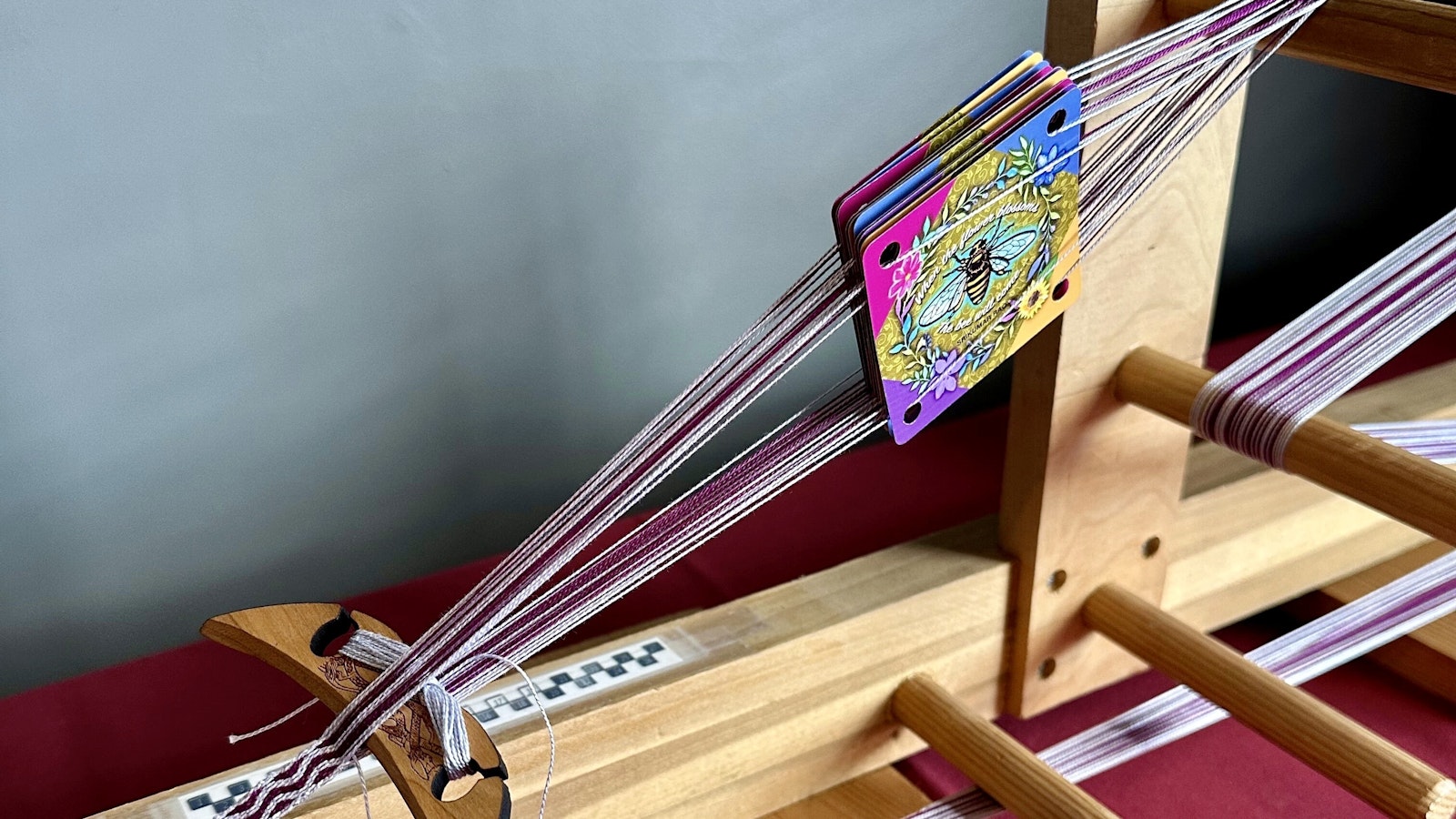Love bandweaving and want to try something new? Consider tablet weaving! This craft is incredibly portable—all you need is a stable surface to tie your warp to and a set of weaving tablets, and you’re good to go! Of course, if you already have an inkle or bandloom, tablet weaving is another way to create incredible, creative cloth with your loom.
However, if you aren’t familiar with tablet weaving yet, it can be confusing to figure out what makes it different from other types of bandweaving. So what exactly is it?
Tablet weaving is a subset of bandweaving that requires using weaving tablets, sometimes called cards, that have strategically placed holes, and you turn the cards to create patterns. Sometimes the holes might be on the corners, sometimes between the corners. Usually, these tablets are square, but you’ll also find other geometric shapes.
Weaving tablets can be used on almost any loom (or non-loom setup) you’d use for other types of bandweaving. They are placed in a starting position, and yarn is threaded through the holes in a specific way according to the draft. Often, the tablets will have letters on each corner, so you can make sure they are all positioned the same way when you begin. This is important because, in tablet weaving, turning the cards is what creates patterns. Sometimes all the cards turn together, and sometimes only select cards turn.
The turning of the cards is what creates the different sheds. In essence, tablet weaving is like having a multi-shaft loom that fits in your pocket—pretty cool, huh? After turning the cards according to the draft, you’ll place your weft pick and beat it in. While this all might sound complicated, the truth is that you can weave beautiful bands with a simple setup. Once you get the hang of simple patterns, you can introduce more complicated tablet-weaving techniques into your repertoire.
What equipment and materials do you need to get started?
Tablets
While you can find tablets in various shapes, most patterns in Easy Weaving with Little Looms use square tablets with holes in the corners. You can find tablets made from a variety of materials, and all work relatively well. Pick the one that feels best to you as you weave—you can even make your own by trimming down and punching holes in playing cards!

Loom
While you don’t need a loom to weave with tablets, looms can help you maintain tension and keep your band safe when not weaving. Most tablet weavers who use looms use an inkle loom, although you can use a rigid-heddle loom or a backstrap setup.
Shuttle
As with any other kind of inkle weaving, you’ll want a belt or band shuttle, preferably one with a beveled edge so you can pack in your weft. If your belt shuttle doesn’t pack in weft the way you like it, a weaving knife can be used along with a shuttle. The image below is an example of a belt shuttle.

Yarn
Any yarns you use should be smooth and even (no lumps or bumps). You’ll often see projects made with cotton, but don’t feel limited to using only cotton yarn.
Now what?
Once your supplies are gathered, it’s time to learn how to read a pattern and set up your tablets. Don’t worry—reading and threading tablets is easy once you know how! For these next steps, we recommend you check out our free skill guide on tablet weaving basics, or the top-rated video, Tablet Weaving Made Easy with John Mullarkey.
Happy Weaving!
Christina

